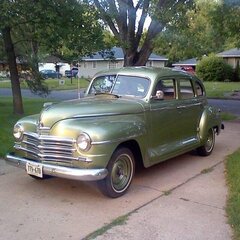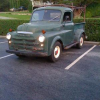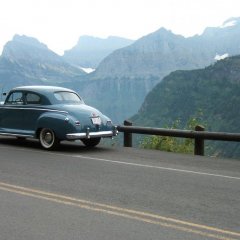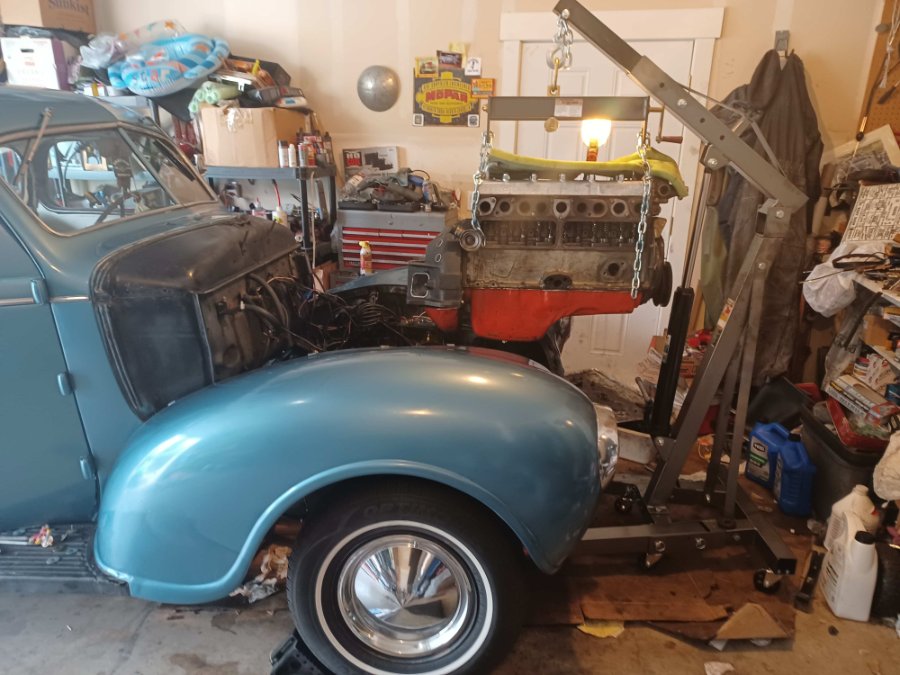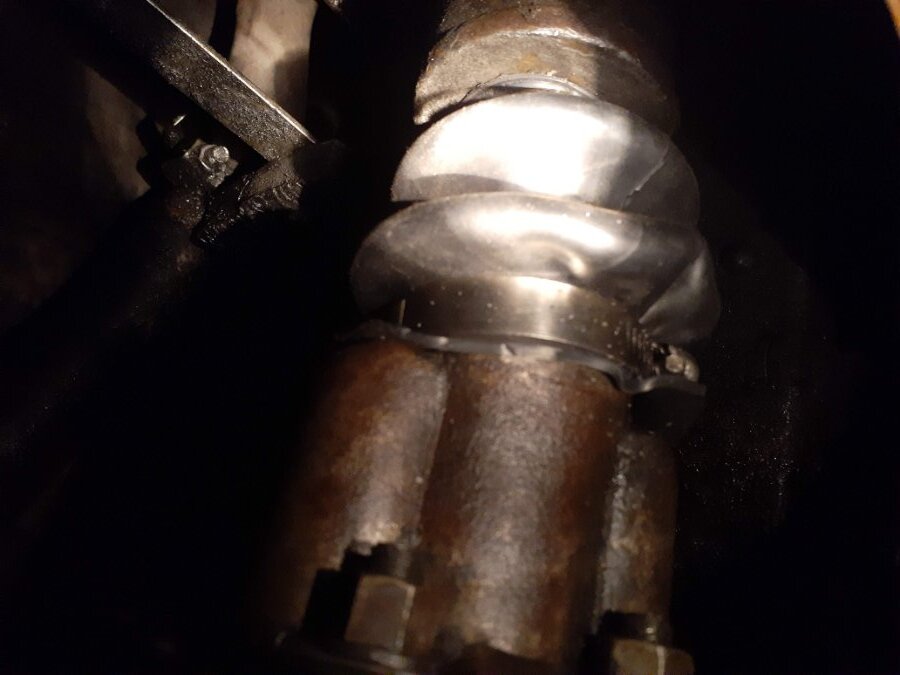-
Posts
103 -
Joined
-
Last visited
-
Days Won
1
Polsonator2 last won the day on June 2 2020
Polsonator2 had the most liked content!
Reputation
77 ExcellentProfile Information
-
Gender
Male
-
Location
Seattle
-
Interests
Old cars
-
My Project Cars
1939 Plymouth Business Coupe
Contact Methods
-
Biography
Lived in seattle area all my 39 years of life.
-
Occupation
Managerial
Converted
-
Location
Tacoma, WA
-
Interests
Hot Rods
Recent Profile Visitors
2,429 profile views
-
I just used cheap duct insulation from the hardware store on my floor, inner doors, etc. It kept heat down and greatly reduced road noise.
-
Here are some pictures of what I did around my stock fuel pump to mimimize heat from the exhaust manifold that is pretty close. Used the stock style heat shield (bent it up) and added header wrap to the exhaust pipe. Fuel bowl does not boil and I don't have any issues even idling after a hot run on the freeway when my thermostat shows temps of 190 - 200. Like I said this set up works for me but results may vary for others depending on their local climate, build, and tune, etc.
-
In my '39 Plymouth I run the Langdon Fenton exhaust copy dual manifolds with the stock fuel pump and have no issues whatsoever. I also run radiator coolant to the plate under my stock intake and no issues. Have put over 50,000 miles on this set up in the last 6 years and no bogging year round, nothing. Smooth freeway and city driving in my daily. My climate here runs maybe 30 degrees F in winter and averages 65F- 80F in the summers (western Washington state around Seattle area). I also run a single Weber 32/36 carb. I also run 10% ethanol gas 87 octane on all fills. I run average speeds of 55- 60 mph cruising the highways here 20 - 40 mile round trips a few times a week and a bunch of city driving. I also fly up to 65 or 70 when needed. Car is a daily driver and keeps up, merges, and accelerates with modern traffic too. I think results that people achieve with these flathead 6's will vary depending on each individual's climate, build, and tune. Current motor specs with 10k miles put on in last year and setup mentioned: late model '59 Plymouth 8:1 compression head, also shaved .030. .060 overbore pistons, '51 Dodge 230. Stock 3.9 rear end and '39 3 speed. No overdrive. Previous motor specs with 40k miles put on myself in 5 years with setup mentioned: '50 Plymouth 218 std bore and '50 Plymouth head. Stock 3.9 rear end and '39 3 speed. No overdrive. Retired this motor after wore out. Do not know how many miles were on motor before I put my 40k on it. Odometer said 22k when I bought the car. Put the 230 in at 62k miles last year and it now has another 10k bringing my setup to 50k miles total in 6 years (odometer now says 72k)
-
I tried using a pilot bushing I got in the clutch kit (throw out bearing, clutch pressure plate, disc, and pilot bushing) from Mopar Pro but the pilot bushing wouldn't fit either in my 218. OD was too large. I ended up putting my old one back in. Honestly, these pilot bushings see little wear so if it is within spec might want to consider reusing your old one.
-
I bet Chrysler recommended straight 10w break in oil because straight 30w is too thick for .0005 factory recommended clearance (many of us run .001 - .002) and thats all they had before 10w 30 became the norm in the mid 50's. But they also said to not drive the motor at high speeds during the break in either, which could have been because of thin 10w oil... For my new rebuilt motor I used 10w 30 as a break in oil and the rings seated just fine. No way in hell I would risk my bearings with straight 10w.
-
Unless it is an old tired engine full of gunk there is no reason to use non detergent oil. Detergent oils came out in the early 50s, contrary to a lot of the common folklore you hear. Your motor has most likely been using detergent oil since the 50s for sure. This non detergent oil thing is a complete myth handed down by people who swore on it because their grandpa or dad did because of some hearsay bs legend. Most cars by the mid to late 50s have been using detergent oil from then until now or the day the car died. If the car has sat in a barn or field since before the 50s then maybe.. Go to the 11:20 mark of this 1953 Chrysler Master Tech video for proof (they also highly recommend it for "hard driving", straight from Tech's own mouth): Personally I use 5w 40 rotella instead of 15w 40. And not because of the zinc, which I also believe is not necessary in a mopar flathead. I do it because it gives me light weight cold starting like a 10w 30 and get the benefit of the 40 weight at high speed driving. My rod clearances in my rebuilt 230 motor are .002 and mains are .0015. If you are running factory clearances of .0005 to .0015 I would go with 10w 30. If it gets thin when hot after a freeway run move to the 5w 40 rotella(unless you have leaks because its pricey). If leaks try 10w 40. If still thin when hot after a 10w 40 go 15w 40. I only used 20w 50 after I spun a rod bearing and did a shade tree rebuild to get my previous motor back on the road. It helped keep pressure up for another 10k miles or so but ultimately the bearings kept wearing out due to the crank not being taken out and reground. Now that I have a fresh rebuilt motor with polished fresh crank, I go for the lightest oil I can that does not thin out after a half hour freeway run. If you are not spinning continually at 2800+ rpms like I am on the freeway I would again recommend 10w 30. One last thing, no need to use a straight 30w oil either... see Sniper's earlier post in this thread that shows how 10w 30 was also recommended in the mid 50's manual once it was available. Very likely that most mopar flatheads ran from the mid 50's to now or when they died were also using multi viscosity oil...
-
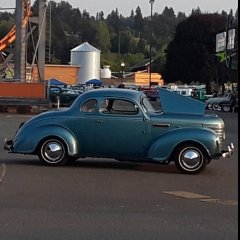
Finally Fired Up My Engine Rebuild. A Summary.
Polsonator2 replied to keithb7's topic in P15-D24 Forum
Congrats Keith! Your solo engine pull video and your tranny video's were hugely instrumental in my own solo engine swap and tranny rebuild! -
My nose came off easy but if I took the whole front end including fenders off, that would have been a nightmare exploration of the Titanic indeed, especially where the running boards bolt on
-
@keithb7 my 218 motor, after patching it up with bearings (spun a rod bearing up on it about 10k miles ago) it finally gave up the ghost. The crank really needed to be ground and one of the cylinders had the wrist pin circlips break off which severely gouged the cylinder walls. These were new clips, rings, and pistons too as I replaced them in all 6 cylinders. Not sure why they failed on this cylinder. It gave me good service, basically almost 50k miles I put on it over 6 years. I found a rebuilt 230 which I then swapped out.
-
Watching Keith's Youtube video inspired me and was a big help in removing my engine. I used a Harbor Freight hoist and also removed all bolt ons. It was also way easier to remove taking the front nose off. I used a leveler too per Keith's video suggestion and it was a huge help. The leveler also made it super easy to get the motor on the motor mounts during reinstallation. Like Keith, I was able to do it all solo. Having the nose off allowed me to also not have to lift the motor as high. I also just rolled the car out of the way before moving the hoist.
-
I used this modern cv boot on mine, just cut it down. The nice thing about it is you just slip it right on as it is split. I used hose clamps to secure it and it comes with tiny bolts that stitch it shut across the split seam. I have put a few thousand miles on them and they are still holding up. I tried those new reproduction leather boots and they shredded. And I dont want to use the new old stock rubber boots as they are super difficult to put on and heard they also fail. Here is the exact one I used: https://www.oreillyauto.com/detail/c/dorman-help/cv-driveshaft-axle-16804/cv-boot-12852/246d80e5eb6e/dorman-help-cv-joint-boot-kit/mtm0/03609 I cut and trimmed it about halfway into the third rib. I would recommend putting it on first and figure out exactly where you would cut it for your application. They even have them in stock at the store.
-
I hooked up my brake bleeder vacuum gun to the VC168 to test when the vacuum comes on. I found it starts to activate at 7-8" of vacuum and is full in at 15". I also tried adjusting it clockwise with a 3/32 allen wrench but it barely moved and the readings were still about the same. I think that basically the out of box settings on the VC168 cannister has adjustment all the way out. Still runs awesome though, I definitely feel better throttle response at cruise and deceleration is more smooth. My old factory advance was leaking.
-
I just redid how I bent the arm and also on my newer '46 Dodge distributor, the original bolt holes on the new canister work and no drilling of new holes except one on the arm is needed. Also, you do have to cut the arm too as it is too long. The distributor I am using is from a '46 Dodge and is #IGS-427A-1. On my older '39 Plymouth distributor, it requires new holes drilled into the cannister bracket to mount it as the holes don't line up and also needs to have the bracket bent back and spacer/washer added to let the bracket clear the distributor cap. The later model distributor worked way better as the distributor cap fits right on and you only need to modify the arm of the cannister. Took it for a spin and it worked great although I am going to try and fine tune adjust when the advance kicks in. I read somewhere that the advance on this VC168 cannister starts at 12" of vacuum. My motors manual says my distributor vacuum advance should start activating at like 5 or 6". This is super cool as it allows us to use off the shelf new cannisters with only minimal fabrication needed. Cant beat $17.
-
I decided to try and retrofit a brand new $17 vacuum canister from O'Reilys to my extra distributor and was able to get it to fit. I bent over the rod on to itself, then cut off the end and drilled a new hole for the plate's peg to fit through. Drilled new mounting holes on the cannister too. The plate engages properly when I suck on the end of the cannister. This cannister is 9.5 distributor degrees stamped on it. Looking through different distributor vacuum advance specs in my old Motor's manual this one seems to be ok and within the range of different ones used. I will be putting it on my in car distributor and see how it work. If it does, this would be an easy $17 way of using a new in stock off the shelf cannister. Here is the one I am trying and it was used on mopar V8s and Slant 6's: https://www.oreillyauto.com/detail/c/standard-ignition/ignition---tune-up/distributor-vacuum-advance/acc1ad8ac67e/standard-ignition-distributor-vacuum-advance/std0/vc168
-
Anyone know if a slant 6 vacuum advance cannister will work? Here are some curves for slant 6 cannisters: https://www.slantsix.org/forum/viewtopic.php?t=13198


